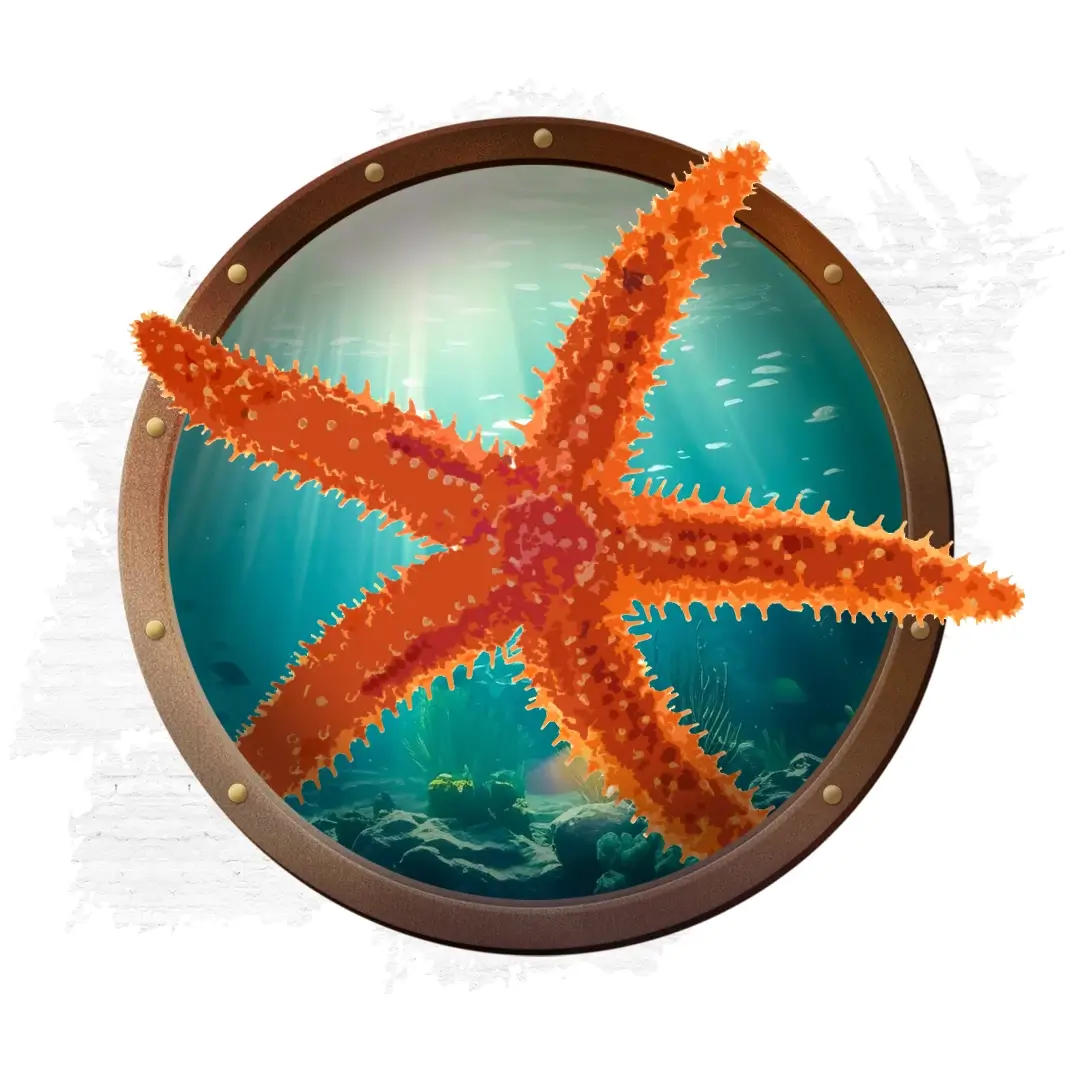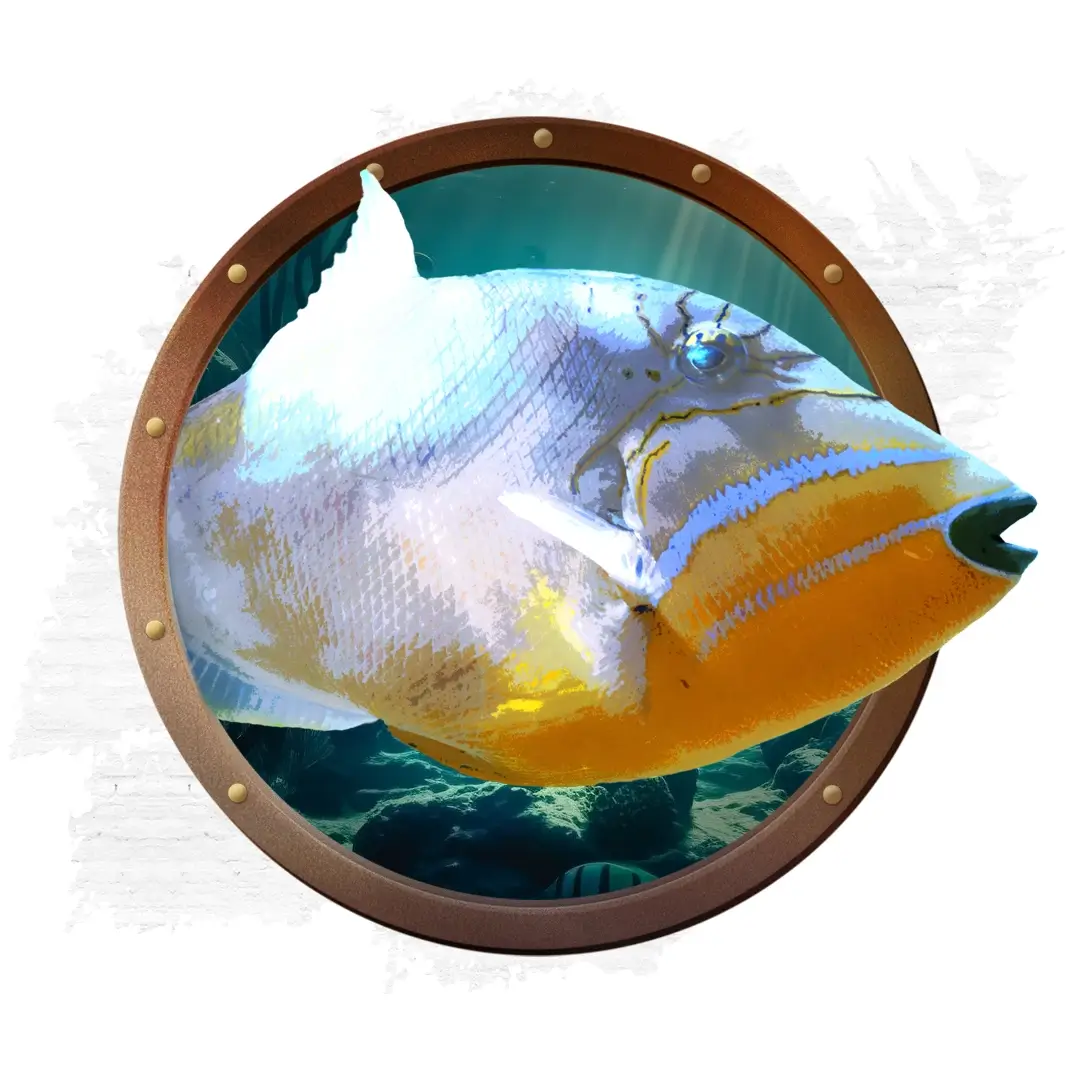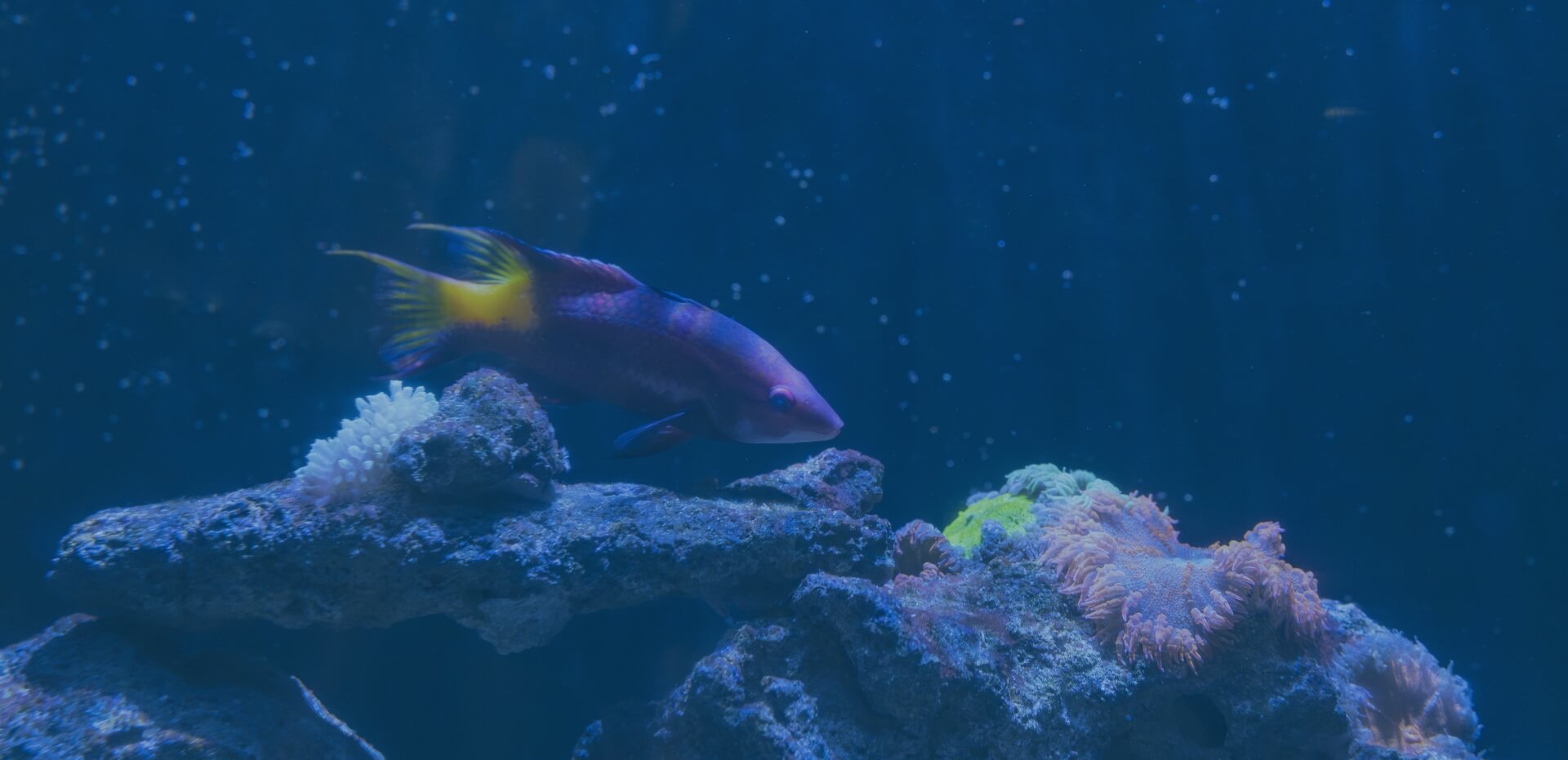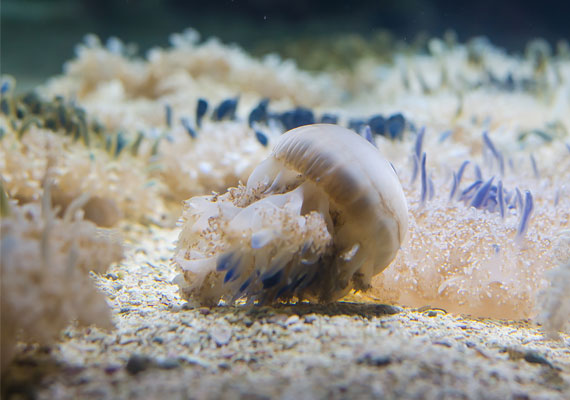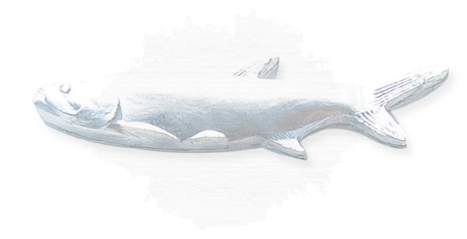Construction of the Key West Aquarium, a WPA project during the Great Depression, began in 1933. Desired by many within the community, the design was prepared by Dr. Robert Van Deusen, then superintendent of Philadelphia’s Fairmount Park Aquarium. The idea was to attract visitors to the little island city, boost the local economy, and serve as a showroom for other aquariums wishing to feature Key West’s diverse native marine life in their own exhibits. It took two years to complete, and the concrete that was used to form the aquarium structure and holding tanks was mixed with seawater from the ocean, as fresh water was hard to come by in those days. Upon its opening in February 1935, just in time for the first official “tourist season,” the aquarium not only was a major attraction but had the honor of being the first open-air aquarium in the continental United States.
WELCOME TO THE KEY WEST AQUARIUM!
Where adventure meets education, every visit is a journey into the heart of Key West’s aquatic treasures. Explore the vibrant marine life of the Florida Keys at the Key West Aquarium, a proud recipient of the prestigious Award of Excellence from the Historic Florida Keys Foundation for our dedication to preservation. Located at the heart of Mallory Square, this historic landmark has shared the wonders of our local waters with generations of visitors.


KEY WEST ATTRACTIONS
DIVE INTO MARVELOUS ATTRACTIONS
DIVE DEEPER INTO POSSIBILITIES
KIDS CORNER
THINGS TO DO
TOUCH TANK
Feel the magic of the ocean at your fingertips! Delicately touch and marvel at fascinating marine creatures that call the warm waters of paradise their home.

Choose Your Tickets
TICKETS & PACKAGES
THE FIRST OF ITS KIND
Did you know? The Key West Aquarium was the first aquarium to use an “open air concept”. This allowed for natural sunlight to illuminate the marine displays.

GET YOUR TICKET
AN INTERACTIVE EXPERIENCE
Located in Key West’s famous Mallory Square, the Key West Aquarium is one of the island’s most popular attractions for people of all ages. Home to jellyfish, sharks and many other marine animals, guests can enjoy interactive conservation talks as well as animal feedings. You’ll meet moray eels, barracuda, grouper, tropical fish, conch and sea cucumbers with narration by the aquarium’s expert guides. For an unforgettable day in Key West, stop by the Key West Aquarium and get up close and personal with some of the most fascinating creatures in the Florida Keys!

FAQ’s
The waters around Key West are home to a variety of marine life, from sharks to sea turtles, jellyfish to stingrays and a plethora of other fish and invertebrates. Sharks are a common sight in the waters around Key West, and they can be seen swimming in the shallow waters of the seagrass flats as well as out on the reef. Sea turtles can be spotted here as well. The Florida Keys are a major feeding and nesting ground for loggerhead and green sea turtles. Jellyfish are a common sight, drifting at the surface with the current. You can also see fields of upside-down jellyfish resting on the bottom. Key West is famous for lobsters and stone crabs, which can be spotted in nooks and crannies in the reef. Finally, stingrays can often be seen swimming in the shallow waters near the shore or buried under the sand with only their eyes showing.
At the Key West Aquarium, visitors can observe a variety of sea life, including sea turtles, stingrays and tropical fish. Visitors can learn about the importance of conservation and the need to protect our oceans and marine life.
If you’re looking for a unique way to experience the wildlife of Key West, the Key West Aquarium is the perfect place to start. You will find a vast range of species, such as sharks, sea turtles, jellyfish, stingrays and numerous other animals. Exploring marine creatures at the Key West Aquarium is an extraordinary experience that can leave you enamored with the underwater world. From the vibrant colors of the lionfish to the gentle movements of the sea turtles, something is fascinating for everyone.
The aquarium offers a range of daily shows and presentations to entertain and educate visitors about marine life and their habitats. The team of marine experts at the aquarium works tirelessly to educate the public about the many unknown and misunderstood creatures that inhabit our world’s oceans. One of the most popular live presentations at the Key West Aquarium is the sharks and rays tour and feeding held every day. Visitors can also catch tours with live sea turtles and watch big game fish feedings. With the variety of shows and presentations available, there is something for everyone in the family.
Touch the mascot of the Florida Keys, the queen conch, as well as sea stars, urchins, horseshoe crabs and other invertebrates that can be seen in our local waters.
A reef tract is a structure made up of interconnected coral reef habitats that extend along large areas of a seafloor. Coral reefs are one of the most significant marine ecosystems in the world and are considered biodiversity hot spots. They support nearly 25% of all marine life even though they cover less than 1% of the ocean floor. Florida’s reef tract is the third-largest barrier reef in the world and the only living barrier reef system in North America. Florida is also the only state to have extensive shallow reef formations near its coastline. The reef is home to over 7,000 species, including various types of fish, coral, algae, sponges, crustaceans, mollusks and echinoderms. It also protects the coast and is the base of the economy in the Florida Keys. Unfortunately, Florida’s corals have faced unprecedented challenges in the past four decades and have declined by over 90%. Damage from hurricanes, pollution, vessel groundings, misplaced anchors, overfishing, disease, heat and invasive species have all contributed to this decline. We can help protect Florida’s reef tract in several ways, such as by supporting conservation programs, research, and advocacy campaigns aimed at protecting coral reefs. Learn more about coral conservation here.
Sharks play a vital role in our marine ecosystem, and protecting them is essential for maintaining a healthy balance. Key West is a paradise for shark lovers. You have a good chance of seeing several species in our local waters.
- Nurse sharks, Ginglymostoma cirratum, are one of the most commonly sighted shark species in the Florida Keys. They are typically brownish and can grow up to 14 feet in length. Nurse sharks are known for their sedentary behavior and make excellent subjects for divers and photographers. These sharks are mostly nocturnal and are found resting on the bottom of the ocean during the day.
- Sandbar sharks, Carcharhinus plumbeus, as the name suggests, prefer sandy-bottomed habitats close to the coast. The sandbar shark has a global distribution in coastal temperate and tropical waters and is the most common large shark species in the Western Atlantic. Able to reach 8 feet in length, they are frequently spotted swimming in shallow waters with their tall distinctive dorsal fin breaking the surface. Sandbar sharks are effective predators and have a varied diet, feeding on fish as well as invertebrates like octopus and crabs. Although they may look intimidating, they are considered a non-aggressive species and tend to be shy.
- Blacknose sharks, Carcharhinus acronotus, are a small shark species, averaging 4 feet in length, that is found in coastal tropical and warm temperate waters of the western Atlantic Ocean. They are easily recognizable by their elongated snout that has a distinct dark blotch on the end when they are juveniles, but this may lighten as they age. Blacknose sharks are fast predators that primarily feed on small fish, cephalopods, and crustaceans. They are a non-aggressive species and have never been reported in a shark attack.
- Lemon sharks, Negaprion brevirostris, are a larger species of shark that is commonly found in the shallow waters of the Florida Keys. They can grow up to 11 feet and are recognizable by their yellow coloration and two equally sized dorsal fins. They are a social species, often seen in groups within a defined home range. This species is commonly seen during shark feeding excursions in the Florida Keys and is not considered a threat to humans.
The global population of sea turtles has declined dramatically in the last 100 years due to a variety of factors, including habitat destruction, pollution, and direct harvest of turtles for their meat and shells. Sea turtles are a crucial part of our marine ecosystem and are the subject of major conservation efforts all around the world.
The Key West Aquarium is home to four sea turtles that the United States Fish and Wildlife Service have deemed non-releasable due to the nature of their injuries and their history. These four sea turtles would not be able to survive out in the ocean but are still able to act as conservation ambassadors at the aquarium where they will receive lifelong care. The goal of the Sea Turtle Conservation Program is to promote public awareness of the challenges sea turtles face in the wild and to participate in ongoing efforts to enrich the lives of sea turtles living under human care. Two of our sea turtles, Lola and Rocky, are the first and second sea turtles in the world to receive biomimetic prosthetic flippers. To learn more about sea turtle conservation and the sea turtles at the Key West Aquarium, join the Sea Turtle Conservation Tour.
Southern Florida is the only place where alligators and crocodiles coexist. While alligators primarily live in the southeastern U.S., crocodiles are found in North, South, and Central America as well as Africa, Southeast Asia, and Australia. Crocodiles favor saltwater areas, while alligators prefer freshwater and brackish water habitats. You will not find any alligators at the aquarium or in Key West, but you can see them on Big Pine in the Blue Hole. This is an interesting habitat created when limestone was quarried for the construction of the overseas highway. A large hole was left behind that is now filled with salt water on the bottom and a lens of fresh water on the top. This is now home to a population of American alligators. You might run into saltwater crocodiles, though! It is rare to see these animals, as they tend to be shy and stay away from people, but they are present in the shallow waters around the Keys. Their population is on the rise again, so people are more likely to see these reptiles in the canals and, famously, at the Navy base.
#KeyWestAquarium
We`re so happy you made time for us in your quick stop to Key West, Gabbie! The Key West Aquarium is great to explore for an afternoon or even just a couple hours.
*
**
***
#keywestaquarium #keywest #visitflorida #visitkeywest #cruisekeywest

Sea-prise! 💦🐙 Our Caribbean reef octopus became a mama to 200 adorable baby octopuses at the Key West Aquarium this weekend! Aren`t they the cutest? 👀 Don`t miss your chance to meet these little wonders in person. Come and get your dose of cuteness overload!
.
.
.
#OctopusFamily #KeyWestAquarium #OctopusMama #Cephalopod #Cute #Baby #OctopusFamJam #KeyWest #FloridaKeys #Florida #Aquarium #marinelife# #video #photooftheday

Happy Locals Sunday! We are celebrating #EarthDay early by making seed starters from recycled toilet paper rolls and playing games about #recycling here in Key West!

We know you`re planning your summer visits to Key West, and thanks to @ms_pix, you can see why we recommend making the Key West Aquarium a part of your visit!
*
**
***
#keywest #florida #visitkeywest #keywestaquarium #summervacation

Join us at the Truman Little White House with Sheldon, Turkey the Tortoise, and the Easter Bunny for the Seventh Annual Easter Egg Roll! 🐢🐰🐣 Saturday, March 30th, 2024 | 9am to 11am

Happy Manatee Appreciation Day! It is always exciting when one of these gentle giants visits us at the Key West Aquarium! Be sure to watch out for manatees when you are on the water and call the FWC Wildlife Alert Hotline at 1-888-404-FWCC (3922) is you see a manatee in distress. 💙 🌊 💦
.
.
.
#ManateeAppreciationDay #Manatee #KeyWest #FloridaKeys #Aquarium #Mermaid #Florida #FWC

We`re proud of our space and the care we put into all the animals in our facility. So when our guests enjoy their experience, it means the world to us. 💙 🐟

